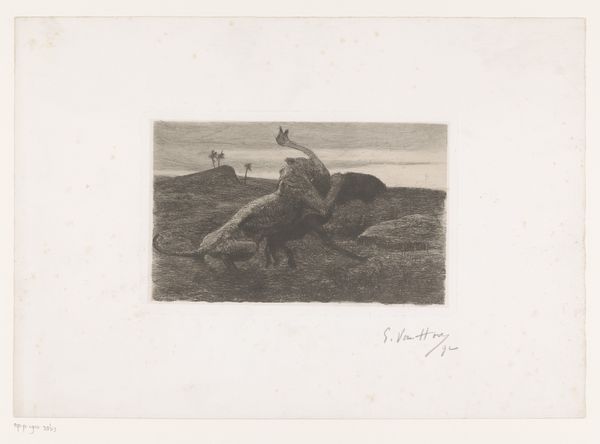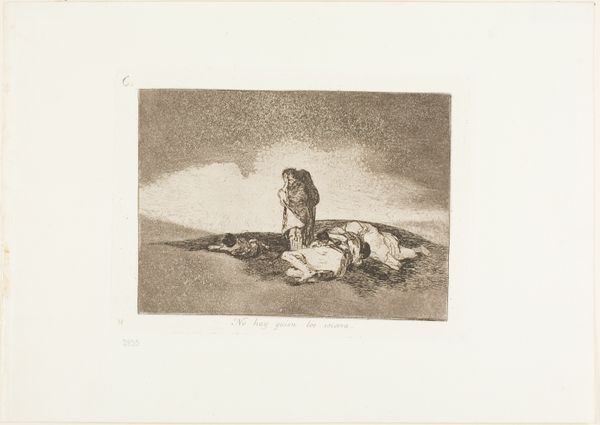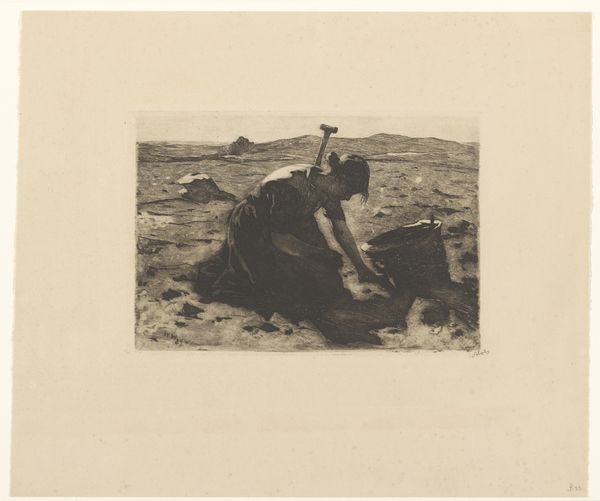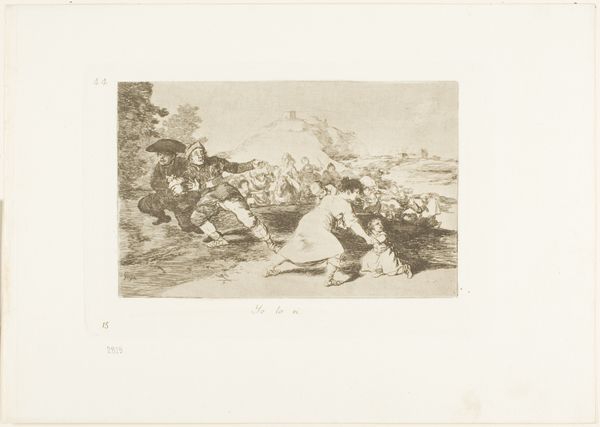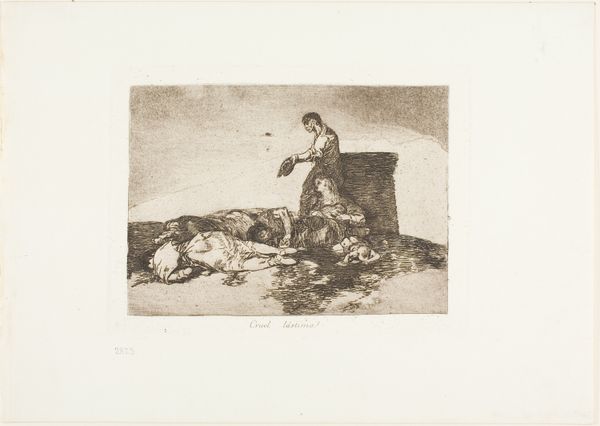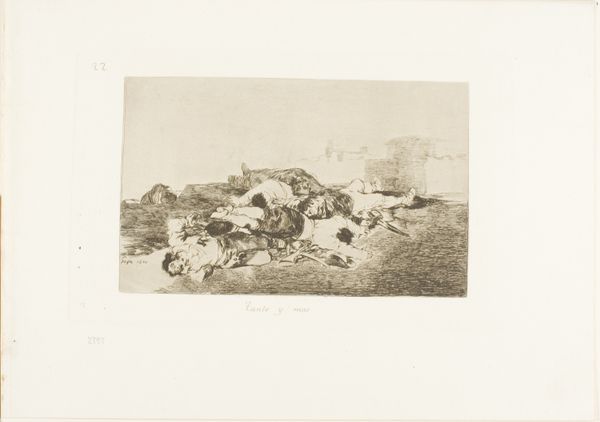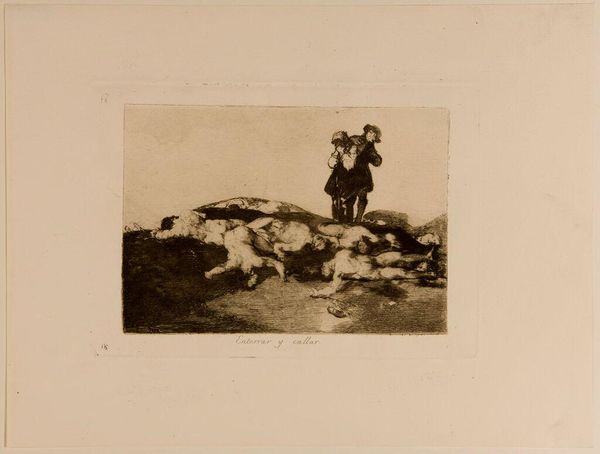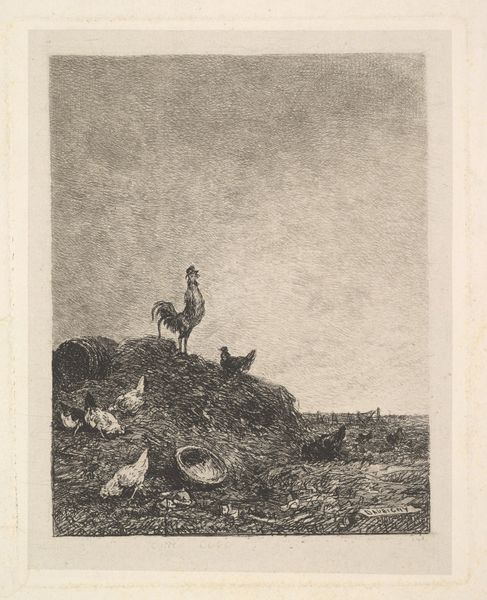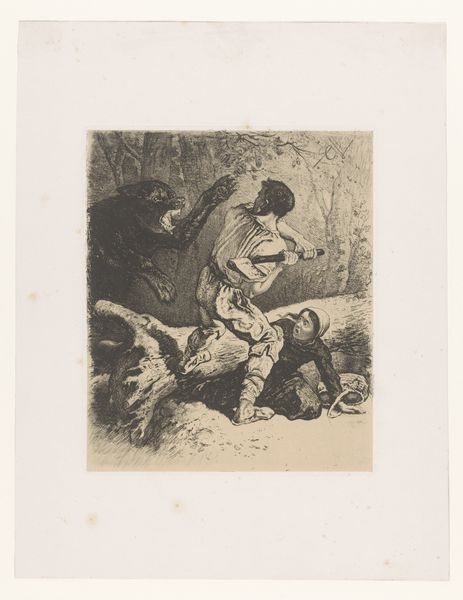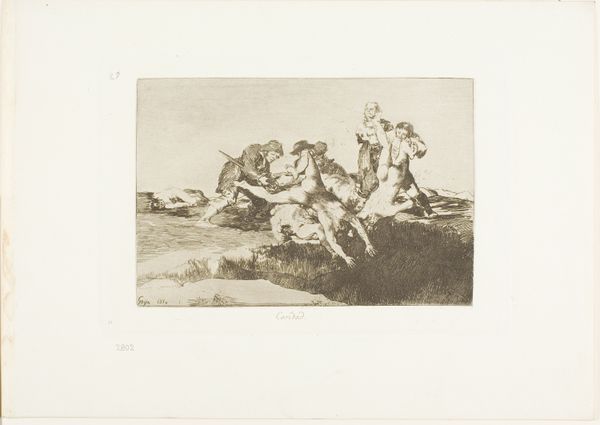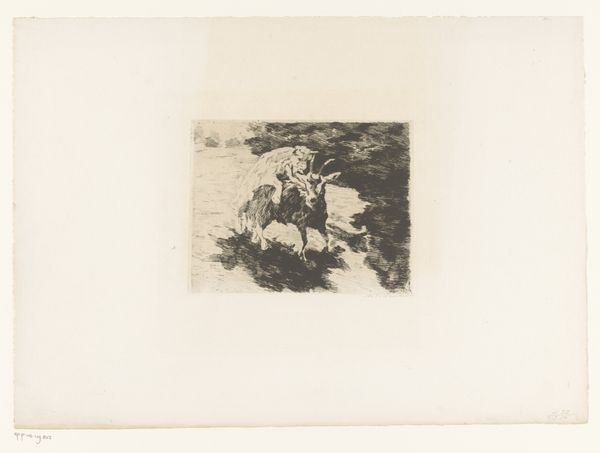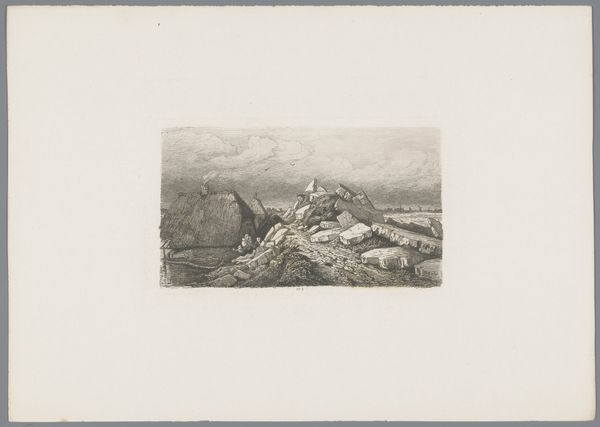
Bury them and keep quiet, plate 18 from The Disasters of War Possibly 1810 - 1863
0:00
0:00
drawing, graphic-art, print, etching, paper, photography
#
drawing
#
graphic-art
#
narrative-art
# print
#
etching
#
war
#
paper
#
photography
#
romanticism
#
history-painting
Dimensions: 133 × 198 mm (image); 160 × 235 mm (plate); 240 × 340 mm (sheet)
Copyright: Public Domain
Curator: The print before us, "Bury them and keep quiet, plate 18 from The Disasters of War," comes from Francisco de Goya and dates possibly between 1810 and 1863. The primary mediums involved here are etching and aquatint on paper. What is your immediate reaction? Editor: Overwhelming bleakness. The contrast is so stark—the pale bodies against that rough, dark ground. It feels emotionally… visceral. Curator: Precisely. Goya meticulously rendered this scene to evoke horror. His expert control of aquatint, note how the varying densities of tone across the work contribute significantly. Consider the societal backdrop, Spain at war. These prints were a response to conflict. Editor: You’re right. Looking at the materials, knowing it’s an etching, the incisive lines lend the scene a biting quality. Almost a brutal commentary in itself. What about those two figures at the top? What's their relation to the grim tableau? Curator: One supports the other; they could be family or neighbors, and likely survivors. They provide a contrast in that they are still alive and burdened with grief and the reality of aftermath. See how Goya employs simple means of rendering. No flashy colors or dramatic compositions; he prioritized honesty. Editor: Absolutely. It also drives home how easily dehumanization occurs in conflict. You just become… bodies on a hillside. Goya’s process reflects the somberness of his theme through an iterative printmaking endeavor. He captures raw experiences through layers. Curator: A powerful observation! The choice of printmaking, something reproducible, amplifies the idea that this horror could and would be repeated, implicating us, the viewers. Editor: The scale too, how its physical dimensions enhance a sense of claustrophobia when you get close, further intensifies its emotional weight. The tangible process itself is critical, the pressure of the plate, the inking—laborious. Curator: Considering all those artistic interventions adds new significance. Thank you, those material and formal details have only served to heighten our appreciation. Editor: It underscores how even seemingly simple pieces are packed with material history.
Comments
No comments
Be the first to comment and join the conversation on the ultimate creative platform.
